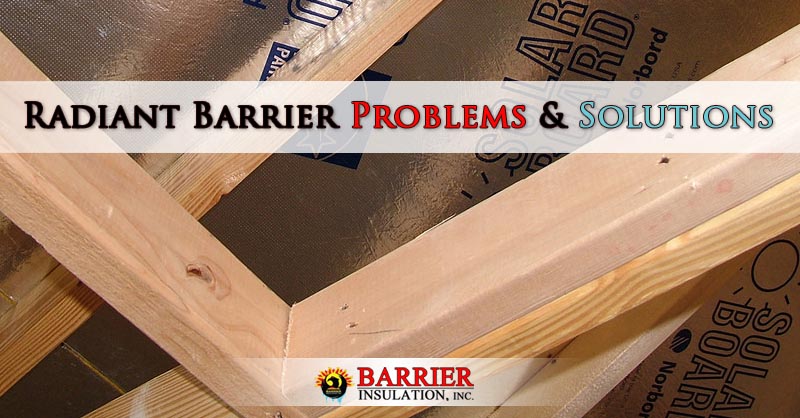If you’re searching “radiant barrier problems” you are either considering installing radiant barrier or you have radiant barrier insulation and are having problems with it. Radiant barrier can be an incredible addition to your home’s insulation strategy when installed correctly. Read about some of the problems and find out how they can be avoided and repaired by your local radiant barrier contractor.
Radiant Barrier Problems & Solutions
There are 3 main issues to overcome when considering radiant barrier as an option for helping insulate your home and they are condensation, dust, and ventilation. Condensation and ventilation are related in that if there is not proper ventilation it can cause foil radiant barriers to develop condensation. These problems either lead to homes being damaged or radiant barrier not being as effective as it should be.
Condensation
Condensation is primarily a concern when radiant barrier is installed on the floor of an attic and sits on top of traditional insulation, such as fiberglass or loose fill. Insufficient ventilation is a primary cause of this condensation and is typically only problematic in colder regions of the country. In areas that stay relatively warm all year long it is less of a concern. Ensuring that gaps and cracks from the climate controlled living areas of the home are sealed helps cut down on moisture that builds up in the attic.
This condensation needs to be monitored if ceilings are discolored from water. Excessive water will cause traditional insulation such as loose fill or fiberglass to lose some of its R-value and potentially frame rot if the problem is severe.
Dust
If radiant barrier isn’t installed correctly dust that settles on the product will reduce its efficiency. There are various types of radiant barrier that can overcome this issue. Primarily among those are spray on radiant barriers that are similar to a paint. The spray on radiant barrier is applied directly to the underside of the roof decking, making it impossible for dust to settle on the heat reflective surface.
Insufficient Ventilation
Ventilation in the attic is important for the performance of your home’s thermal barrier approach. Radiant barrier works better in the summer and helps remove excessive water during the winter. For proper ventilation building codes state that every 150 square feet of attic floor should have 1 square foot of net free ventilation area. Each different attic size, shape, and volume requires different levels of ventilation and should be calculated by your insulation contractor.
Quality Radiant Barrier Installation
Radiant barrier can add an additional layer of insulation to homes to improve energy efficiency, reduce reliance on air conditioning, and ultimately lower utility bills. Barrier Insulation of Phoenix understands the problems that can occur when radiant barrier insulation is either not installed correctly or attics are not properly ventilated. Let us help you if you are experiencing condensation problems or have dust covering your radiant barrier in the Phoenix Valley of Arizona.

You guys seem to know your stuff, I have a friend over in Phoenix Valley that were having problems with their insulation, I’ll bring them your way!